
Students will create a compilation of 20 images from the 1960s and explain the significance of each image.
- Subject:
- History
- Material Type:
- Activity/Lab
- Assessment
- Diagram/Illustration
- Date Added:
- 07/14/2017

Students will create a compilation of 20 images from the 1960s and explain the significance of each image.

This seminar examines the history and legacy of the Cold War on American science. It explores scientist’s new political roles after World War II, ranging from elite policy makers in the nuclear age to victims of domestic anti Communism. It also examines the changing institutions in which the physical sciences and social sciences were conducted during the postwar decades, investigating possible epistemic effects on forms of knowledge. The subject closes by considering the place of science in the post-Cold War era.

Between 1957 and 1975, the Cold War rivalry between the United States and the Soviet Union motivated each nation to attain firsts in space exploration, which were seen as necessary for national security and symbolic of technological and ideological superiority. The Space Race involved pioneering efforts to launch artificial satellites, sub-orbital and orbitalhuman spaceflight around the Earth, and piloted voyages to the Moon. It effectively began with the Soviet launch of theSputnik 1 artificial satellite on 4 October 1957, and concluded with the co-operative Apollo-Soyuz Test Project human spaceflight mission in July 1975. The Apollo-Soyuz Test Project came to symbolize détente, a partial easing of strained relations between the USSR and the US.The Space Race had its origins in the missile-based arms race that occurred just after the end of the World War II, when both the Soviet Union and the United States captured advanced German rocket technology and personnel.The Space Race sparked unprecedented increases in spending on education and pure research, which accelerated scientific advancements and led to beneficial spin-off technologies. An unforeseen effect was that the Space Race contributed to the birth of the environmental movement; the first color pictures of Earth taken from deep space were used as icons by the movement to imply that the planet was a fragile "blue marble" surrounded by the blackness of space.Some famous probes and missions include Sputnik 1, Explorer 1, Vostok 1, Mariner 2, Ranger 7, Luna 9, Alouette 1,Apollo 8, and Apollo 11. Source: Wikipedia: Space Race

Pair this activity with a moon/space unit to engage students in evaluation and critical thinking about life in space.
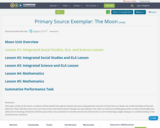
Through a study of the moon, students will be guided through an inquiry process using primary sources to learn how we shape our understanding of the past (history). They will also learn how new discoveries and observations change our perceptions over time, as each succeeding generation creates knowledge and adds new technology. Students will then pose their own questions to wonder how future discoveries or new technology might change our understanding of the world and our universe.
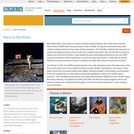
After World War II, there was non-violent, political hostility between the United States and the Soviet Union (USSR), which became known as the Cold War. During this contentious time, both nations created rockets for long-range military weaponry. The Cold War catalyzed the expansion of rocket technology and each countrys desire to conquer outer space. Not only did America want to explore one of the last frontiers, it also wanted to claim technological dominance over the USSR and ensure Americas title of superiority in a time of unease and tension. In 1955, the US and the USSR each announced plans to launch a satellite into orbit. Who would be the first to succeed? On October 4, 1957, the USSR launched Sputnik I into orbit, taking the lead in the Space Race. Only four months later, the US successfully launched its own satellite, the Explorer I, into space. In the wake of these first successful orbital space flights, President Dwight D. Eisenhower recommended to the US Congress that a civilian agency should be established to direct non-military space activities. Thus, the National Aeronautics and Space Administration (NASA) was born and the Space Race was underway. Throughout the 1960s and 1970s, the American space program and its new classes of astronauts achieved breakthroughs in science and space explorationeven sending a man to the Moon. This exhibition was created as part of the DPLAs Digital Curation Program by the following students in Professor Helene Williams's capstone course at the Information School at the University of Washington: Danielle Rios, Dianne Bohach, Jennifer Lam, and Bobbi deMontigny.

In this episode of STEM in 30, learn about why we went to the Moon, what we accomplished, and what's next.
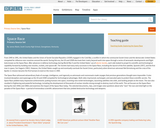
From 1945 to 1991, the United States and the Union of Soviet Socialist Republics (USSR) engaged in the Cold War, a conflict in which the communist Soviet Union and the democratic United States competed for influence over countries around the world. During this era, the US and USSR also took their rivalry beyond earth into space through a series of aeronautic developments and flight tests known as the Space Race. After advances in defense technology during World War II and the United States’ use of atomic bombs, each side looked to propel its scientific and technological capability forward by building new missiles, rockets, and spacecraft. The Soviets had many early successes in the Space Race, including the launch of the first satellite, Sputnik (1957), and the first man in space, Yuri Gagarin (1961). However, the United States caught up and eventually overtook the Soviet Union, particularly when American astronaut Neil Armstrong and the crew of the Apollo 11 mission became the first humans to land on the moon in 1969.
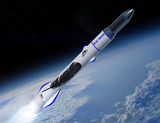
The space race was a decade long battle bettween the USSR and the US to see who landed on the moon first. In the end, the US reached the moon first, and the war ended with the Soviet Union nad the United States deciding to work together instead of fight.
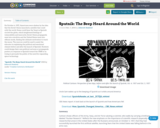
On October 4, 1957, Americans were shaken by the idea that the Soviet Union launched a satellite that could orbit the world. Some could hear the 'beep' as Sputnik circled the globe, which heightened feelings of vulnerability and insecurity. Soviet Union propaganda went into overdrive and the United States went into offense mode, finding the ultimate motivation to reach the moon.
The sources could be used to assist the educator in explaining the political and emotional climate before and after the launch of Sputnik.
Students could design their own political cartoons or propaganda posters; in response to Sputnik toward the USSR or in trying to persuade the public of the need for expanding space technology.